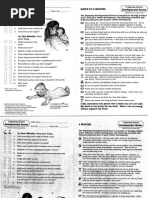Denver Developmental Screening Test Ii Pdf Files

TEST BEHAVIOR JABBERS COMBINE SYLLABLES DADA/MAMA NON-SPECIFIC IMITATE SPEECH SOUNDS SINGLE SYLLABLES WALK BACKWARDS WALK WELL STOOP AND RECOVER STAND ALONE 2 2 2 2 2 (Check boxes for 1st, 2nd, or 3rd test) Typical Yes No Compliance (See Note 31). Denver II developmental milestones. Norms on the Denver Developmental Screening Test (DDST) developed in Denver, Metro-Manila, Tokyo, Okinawa, and the Netherlands were compared.

Developmental Screening Tools Includes: (Ages and Stages Questionnaire), (DDST-II), (ESI-R), (Infant Toddler Developmental Assessment), (Hawaii Early Learning Profile),, (Assessment Evaluation & Programming System), (Preschool Language Scale),,,. - A new measure called PEDS:Developmental Milestones (PEDS:DM) for children 0 - 8 years is now available for parents and professionals. The Screening Level version is in wide use by pediatricians but the PEDS:DM also has an Assessment Level version helpful for child-find, early intervention programs, and NICU follow-up. Tools recommended by the American Academy of Pediatrics,. For all other tools,.
Immo killer v110 download torrent. Download Immo Killer 2.0 - best software for Windows. CarProKey: CarProKey immo pin code calculator can calculate: - Immobilizers PIN code by VIN, serial number of. Immo Killer V1.1 Description: Immokiller 1.1 is a software for repairing, by passing, virgining the immobilizer of cars which are found in ecu.
Ages and Stages Questionnaire (ASQ) Diane Bricker, Ph.D. & Jane Squires, Ph.D. Type: Developmental screening, 4-60 months What is the purpose of this tool?
To screen for developmental delays in the first 5 years of life. It covers 5 developmental areas: communication, gross motor, fine motor, problem solving, and personal-social. What is its appropriate use? First-level comprehensive screening for developmental delays; monitoring the development of children considered 'at risk' for developmental disability or delay resulting from medical or environmental factors. It may also be used to communicate to parents the stages of child development and the capabilities of their child.
What are the components? It includes 30-item questionnaires completed by the parent or caregiver at specific ages. The first questionnaire is completed when child is 4 months old and the last at 60 months of age. To each developmental item parent responds 'yes', 'sometimes', or 'not yet'. Professionals convert items to point values and compute total scores.
Available in Spanish. Who can administer the scale?
It can be completed by parent self-report or by individual interview. Administration and scoring instructions come with scale set. How long does it take to administer? Approximately 10-20 minutes for parent response. Is there information on reliability and validity? Overall agreement on children's developmental classifications was 83% between the ASQ and professionally administered developmental scales, with a range of 76% to 91% agreement.
Test-retest reliability was over 90% at a 2 to 3-week interval, and agreement of parents with trained examiners also exceeded 90% [1]. What are the advantages of this tool?
It is a low-cost method of doing periodic screening; it takes advantage of parental knowledge of the child; it can be adapted to a variety of environments. What are the disadvantages?
It depends solely on parent report. Where can I find more information? Denver Developmental Screening Test II (DDST-II) William K.
Frankenburg & Josiah B. Dodds Type: Developmental screening, 1 month - 6 years What is the purpose of this tool? To screen children from 1 month to 6 years of age for possible developmental problems, to confirm suspected problems with an objective measure, to monitor children at risk for developmental problems. What is its appropriate use? First-level screening of children's developmental status. What are the components? Performance-based and parent report items are used to screen children's development in four areas of functioning: fine motor-adaptive, gross motor, personal-social, and language skills.
Child's exact age is calculated and marked on the score sheet. Scorer administers selected items based on where the age line intersects each functional area. The scorer can then determine if child's responses fall into or outside of the normal expected range of success on that item for the child's age. The number of items upon which the child scores below the expected age range determine whether the child is classified as within normal range, suspect, or delayed. Those with suspect scores are monitored by more frequent screening, while those with delayed scores are referred for further assessment. There is also a testing behavior observation filled out by the test administrator.
Spanish version is available. Who can administer the scale? Trained paraprofessionals and professionals administer the test. Is training available? The test comes with a training video and proficiency test. Scorers should pass the proficiency test and practice testing children of different ages.
- суббота 22 декабря
- 80